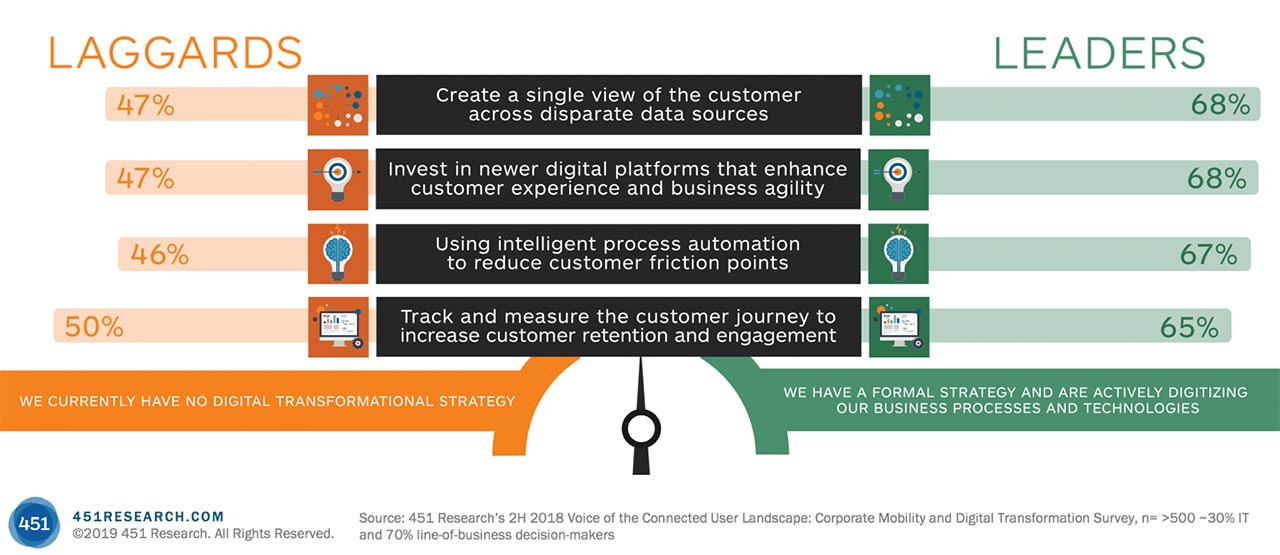Customer 360 is not a Luxury, but a Necessity for Survival
For decades, businesses have sought a comprehensive picture of customer activity and behavior, but have been thwarted by data that remains siloed or unanalyzed. Finally, processes for getting a reliable and complete view of what customers want (and how they want to be contacted) are taking shape. Tools that synthesize different data sources across enterprises are starting to provide insights into moments of influence and leverage, enabling faster, more personalized interactions with customers.
To guide the customer experience toward successful outcomes, businesses need a great deal of information about customer histories, behaviors and trends. They need to balance where the customer is in the lifecycle (pre-purchase, post-purchase, etc.) with the best methods of connecting to that individual and the business’ ability to put forward an attractive offer.
There have been many attempts to synthesize separate data resources into a holistic customer view, beginning with CRM. CRM was notable around the turn of the 21st century for creating an appetite for a broader customer view, but also for its inability to satisfy the needs of a diverse set of stakeholders (marketers, salespeople, service teams).
Even as professionals tasked with designing new offers and experiences tried to come to grips with a rapidly changing set of technologies (especially when it came to communication channels, each of which comes with a new set of content requirements and customer expectations), it became apparent within the last five years that the best outcomes stem from having a more complete picture of what the customer has done and what they want to accomplish.
In technology terms, executing on business transformation demands investments in new digital platforms that enable a real-time unified profile with the ability to take action on the intelligence. Our data shows that digital maturity matters will separate leaders from laggards. Businesses with formal digital transformation strategies will leapfrog businesses that have no plans.

This requires a well-planned approach to business and IT innovation, with the goal of aligning around a disruptive culture that drives investments in new tactics to remain relevant in the eyes of customers. Investing in algorithmic technologies can help to achieve scalable contextual relevance as intelligent applications to build deeper connections, recommend next best actions and create more contextually driven interactions.
This requires bringing together bits of information on:
Activity: How many times has this person been contacted, and what have been the results each time?
Intent: What has this person been shopping for, and what have they purchased?
Satisfaction: Have they expressed sentiments about their experiences so far, or can the business infer sentiment from other signals?
Influence: Does this customer have a platform to recommend your product to others or dissuade them from buying?
Preferences: How does this person want to be contacted, and when?
Context: Are there in-the-moment circumstances (e.g., an open service ticket) that affect whether to make an offer or not?
Having a real-time 360-degree view of the customer, incorporating all of these elements and other variables, is at the heart of the business use case for many related technologies – everything from applying machine learning to detect buying intent to creating personalized emails and web landing pages, or deciding what contact channels to support.
All of this has always been true, but it has also always been aspirational. Recent innovations in integrating data sources and analyzing them have brought us very close to the point where businesses can actually take advantage of a broad view of the customer across many of those variables noted above.
The empowered customer is, in effect, forcing evolution of the entire technology stack to enable real-time, contextually relevant experiences. We have witnessed dramatic changes as a result, with the relationship between IT and line of business evolving to embrace and capitalize on this disruption. Whether through contextual experiences, pervasive intelligence or emerging cloud models, it is clear that technology plays a pivotal role in determining long-term trends and driving changes in human behavior.
As the pace of technology, innovation and competitive pressures accelerate, business leaders that ignore this new reality do so at their own peril. Experiences, not products, will be the battleground of the future, and data plays a powerful role in improving the context of those experiences. Organizations must digitally transform their businesses to best attract, win, retain and support customers by leveraging the latest applications, analytics and infrastructure to deliver a differentiated experience. Doing so is not a luxury, but a necessity for survival.




